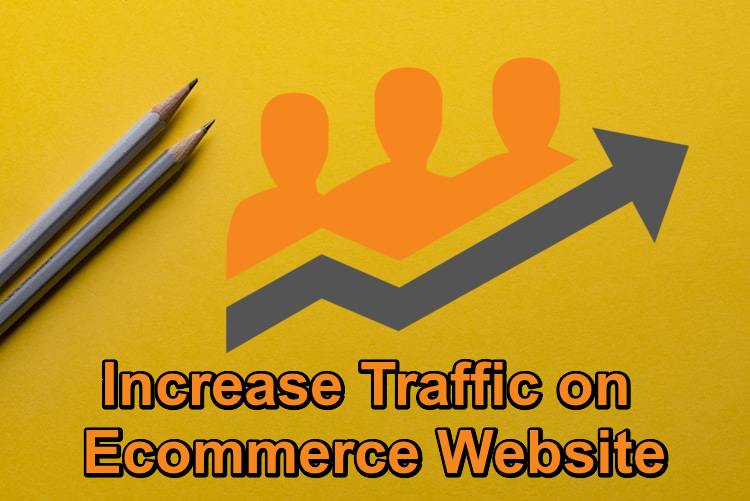18 Sep

|
Getting your Trinity Audio player ready...
|
Metrics… Not the first time we’re hearing this word!
Everyone around us needs them. Either it’s a high school science teacher, a football coach…or even an online business. Metrics are important to measure performance.
Unlike physical businesses, online businesses offer greater visibility of customers’ behaviors and actions. For instance, can you tell how many people see your ad banner on the street? Or how many people come to your shop after seeing a newspaper ad?
Nope, you can’t!
But you can tell how many people visit your website after clicking an ad. Or how many people engage with your social media posts.
Isn’t it great? In an online world, you can track everything that happens on your website. Thanks to the eCommerce metrics and KPIs.
With the help of these metrics, you can understand the performance of your website. And if needed, you can tweak changes to the areas that show weaker performance.
In today’s post, I will talk about 11 essential eCommerce metrics and KPIs that you need to track in 2021.
Before moving forward, let’s define the terms metrics, KPIs, and the difference between the two.
Table of Contents
What Is A Metric?
A metric is a quantitative measurement of a website’s performance. For example, eCommerce metrics range from website visitors to average order value. From traffic sources to cart abandonment.
There are a lot of eCommerce metrics to track and measure a website’s performance. Google Analytics, homepages, and checkout pages provide rich data for measuring the metrics.
Now, let’s talk about…
What Is A KPI?
Key performance indicator (KPI) is an important metric. KPIs are the numbers that businesses track for growth.
What’s The Difference Between A Metric And An Ecommerce KPI?
Many businesses use the terms metric and KPI interchangeably. But they aren’t the same.
Metrics measure processes. In contrast, KPIs track how well those processes are performing. KPIs are subjective for businesses. Each business sets specific targets it wants to achieve.
So let’s say the points earned in a game is a metric. And 40 points earned would be a KPI.
In the case of online business, site visitors are a metric. But ‘how many visitors?’ is your KPI.
Another example is, the average order value is a metric but not a KPI. But if I set my AOV’s target at $50, it is a KPI.
Remember…
All KPIs are metrics. But all metrics are not KPIs.
Now that you know the difference between the two, you’re probably wondering…
Why eCommerce KPIs And Metrics Are Important For Your Business?

eCommerce KPIs enable businesses to make rational decisions pertaining to different areas. Such as marketing, sales, customer experience, and other important areas.
With KPIs’ help, you can understand which strategies work for your business and which don’t. It also gives you an insight into the weaker areas of your business. Once you know which areas need some tweaks, you can focus on them.
eCommerce metrics enable you to make informed and timely business decisions. And by doing so, you will drive your business towards success and win more customers.
And that’s the importance of KPIs and Metrics for your business.
Now, let’s discuss the…
11 Essential Ecommerce Metrics & KPIs To Track In 2021
The following are some of the most common KPIs and metrics that businesses track. The tracking of these KPIs will allow you to make better business decisions in 2021:
Product Discovery Metrics
-
Impressions
The number of times an ad or content is presented to a person is known as impressions. These impressions can happen anywhere. They can occur through paid ads, search results, or social media marketing. Like I said, anywhere.
Now, remember, impressions do not mean CLICKS. Suppose 1000 people view your social media post, its impressions, and not the clicks.
Impressions are the most controllable metric in this list. You can increase or decrease them according to your budget. For example, you can run more paid ads to increase the impressions.
-
Reach
Reach is your total number of followers and subscribers. Or we can say the total number of people who see your content. This includes your social media followers, newsletter subscribers, and loyalty program subscribers.
Consistent marketing, promoting newsletters, and loyalty subscriptions can improve your reach.
-
Engagement
The intersection of your impressions and your reach results in engagement.
It measures how many followers/ subscribers (reach) are engaging with your content (impressions).
Engagement includes both acquisition and non-acquisition-related activities. For instance, activities like click-through are acquisition-related. While likes, comments, and shares are non-acquisition-related activities.
To boost your engagement, you need to promote your brand on different platforms.
Acquisition Metrics
-
Email Click-Through
Email click-through rates measure how many subscribers open emails and visit your website.
To calculate email CTR percentage:
Divide the total number of people who clicked the email by the total number of delivered emails. Multiply the quotient by 100 to express your answer in percentage.
(No. of people who clicked ÷ No. of emails delivered) X 100
Your average email click-through rate should be 2.5%. If it’s lower than that, you need to identify the problems in your emails. Create engaging and mobile responsive emails. Don’t forget to add compelling subject lines and CTAs to improve the click-through rate.
-
Cost Per Acquisition
Cost per acquisition is helpful to know how much you are spending to get new customers.
CPAs help the business owner not to overspend on a campaign that attracts few customers. Marketing is an important part of every business. A business owner invests in paid ads, social media marketing, and other channels.
The aim of marketing is to drive traffic and ultimately boost sales. But, if the marketing cost is higher than the total revenue, it shows the wastage of the marketing budget.
If you want to have a higher CPA rate, you should know how to manage AdWords for eCommerce even if you outsource this service.
To calculate CPA:
Cost Of Conversion Acquisition ÷ Number Of Conversions

-
Social Media Engagement
Digital marketing is incomplete without social media marketing. Businesses should track social media metrics daily, for instance:
Likes per Post
To measure how much people like your content:
Add up all the likes and thumbs up you’ve received on each social platform. Next, divide it by the total number of posts you have on each social handle.
Comments per Post
Comments per post show how active your audience is to share their views on a post. It is easy to calculate comments per post.
Add up all the comments under your post from all the social channels. Divide its sum with the total number of comments across your social channels.
Shares per Post
This metric shows how many times your content was shared in a given period. The shares refer to Facebook and Instagram shares, retweets, and repins.
Clicks per Post
Clicks per post measure the number of click-throughs via social media posts. To calculate the click per post of a given time, add up the number of clicks the post received in that period.
Divide its sum by the number of social media posts published in the given time.
Conversion Metrics
-
Shopping Cart Abandonment Rate
This metric measures how many visitors start shopping but leave the website without starting the checkout process.
If the rate is low, a business can look for the website problems that prevent the visitors from checking out.
To calculate shopping cart abandonment rate:
{1-(Completed transactions ÷ Initiated Sales)} X 100
Initiated sales refer to the sales that weren’t complete. The visitors added products to the carts but didn’t buy them.
-
Checkout Abandonment
Checkout abandonment shows the percentage of customers that leave the website after starting the checkout process.
A high percentage indicates problems in the website’s checkout system.
Use the following formula to calculate the Checkout abandonment rate:
{1-(No. Orders Placed ÷ No. of Checkout Initiated)} X 100
-
Average Order Value
AOV measures the average price that customers pay for the items in their cart. Business owners check the average order value over time. It helps them to understand the customers’ buying patterns. And the effectiveness of their marketing strategies.
If a business’s AOV is low, it needs to rethink its product quality, prices, and upselling.
You can calculate your average order value by:
Dividing the total revenue by the total number of orders
AOV = Revenue ÷ Total Orders
-
Sales Conversion Rates
Business owners are quite a fan of this metric. It tells them how many of their site visitors convert into customers.
If the rate is low, it signifies that the website isn’t converting many visitors into customers. Businesses can apply strategies to boost conversions and sell more to visitors.
To calculate sales conversion rate:
Divide your total conversions of a given period with your total number of visitors. Multiply the quotient by 100 to get your answer in percentage.
(Conversions ÷ Total Visitors) X 100
Retention Metric
-
Customer Lifetime Value
If you want to keep your customers for a long time, you wouldn’t want to miss this metric. CLV shows the average amount that a person will spend on your business during his time as your customer.
Businesses use this metric to identify customers who are likely to spend more than others. A business can enhance their shopping experience, so they don’t go to another business.
Formula to calculate Customer Lifetime Value:
- (Customer Value x Average Customer Lifespan)
- Customer Value = Average Purchase Value x Average Number of Purchases
- ECommerce Metrics And KPIs: Where Do YOU Stand?
To determine the performance of your business, calculate the KPIs that I’ve shared above.
Compare your metrics with the industry benchmarks to check your performance. If your metrics are lower than the industry benchmarks, don’t fret.
KPIs are subjective to each business. The size of the business, cost of products, nature of products, and many other things.
But if your metrics are hitting the ground, it’s a red flag! You need to pay attention to the metrics that aren’t up to the benchmarks.
I hope this article helps you measure the important KPIs and metrics in 2021.
All the best
Author Bio:
Ricky Hayes is the Co-Founder and Head of Marketing at Debutify – a Shopify theme for sales, helping brand owners build high-converting stores in minutes. He is a passionate entrepreneur running multiple businesses, marketing agencies, and mentoring programs.



1 Comment
Dai Software
This content is well-detailed and easy to understand. Thank you for creating good content!